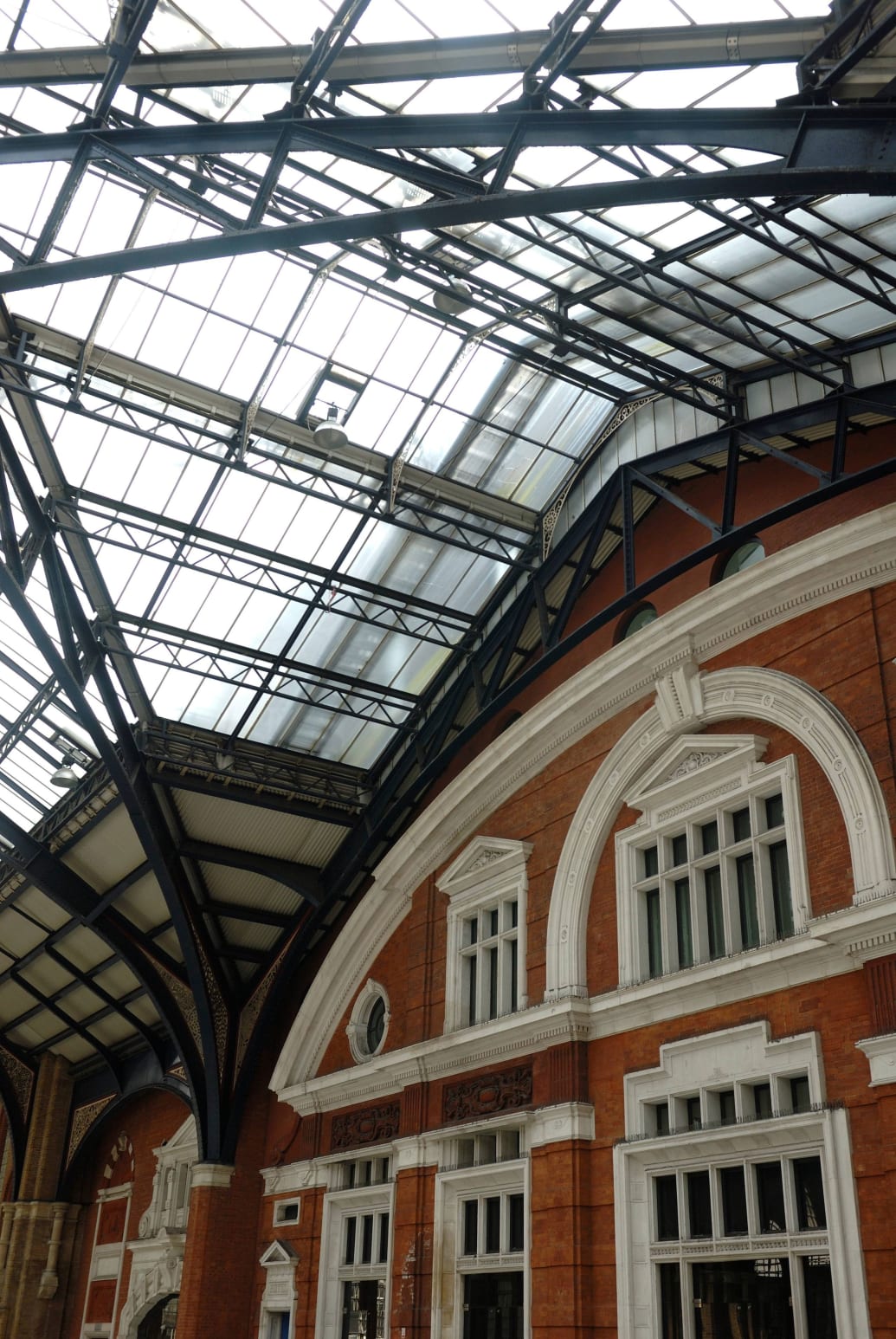It was once one of London’s most storied hotels. Built in the East London neighborhood of Shoreditch by the Brothers Barry—Edward and Charles, Jr., who designed a number of 19th century English icons, including the Houses of Parliament—the Great Eastern Hotel opened in 1884. It was constructed on a storied site, the infamous former home of the Bethlehem Royal Hospital, also known as “Bedlam,” Britain’s first hospital for the mentally ill.
Over the years, the stylish, Gothic, red-brick hotel housed various luminaries, both real and fictional—including Van Helsing, Bram Stoker’s intrepid vampire hunter, who resided here in Stoker’s first Dracula novel. Postcards were produced of the hotel’s façade. Sea water was transported by train, so guests could enjoy healing salt-water baths.
But as Shoreditch devolved, so did the hotel, and by the time current owner, Sir Terence Conran, checked into the place in the 1980s, it had become a flophouse. “It was in the most disgraceful, derelict condition,” remembers Conran, a well-known designer and renaissance man. “They asked me, ‘how many hours do you want?’” So he bought the hotel, gutting and transforming it, reopening as the world’s first Andaz, Hyatt’s boutique brand.

Courtesy of Andaz London Liverpool Street/Hyatt
And they’ve just undergone another extensive renovation, carried out in 19 stages and finished this past year with the completion of their 860-square-foot RED Suite, designed by Conran himself, spacious and comfortable and filled with personal touches. Given the historic nature of the hotel and the level of design work that has gone into it, the hotel was a shoo-in for Beast Travel’s twice-monthly hotel feature The New Room with a View. (Like other RED projects, 30 percent of the room rate is donated to help fight AIDS.)The suite, like the rest of the hotel, aims to reflect Shoreditch and all of East London, bringing the outside into its restaurants and 267 rooms—of which, no two are the same. The area was once a hub for industries like silk weaving and coffee, which was offloaded nearby from ships on the Thames, and those elements are reflected in the artwork and etchings. Larger than most in London, the rooms are also equipped with modern conveniences—including flat-screen TVs and, a new addition, large walk-in showers.
Bedlam even gets its due at the hotel’s Rakes Café Bar, adorned with A Rake’s Progress, eight works, reflecting eight stages of the mind, by 18th-century painter William Hogarth which trace the moral decline and ruin of Tom Rakewell—who ended up in the Bethlehem Royal. Rakes is divided into three sections—The Front Room, where DJs spin and people dance, The Lounge, a cushy, luxe space, perfect for a comfortable cocktail, and No. 3, a “secret room” for private parties. The original hotel was even built with two Masonic temples, and one of which, grand and strange, has been reopened and renovated—it’s now used for morning yoga,Game of Thrones-themed dinners, and Lady Gaga even did a photo shoot there.

Courtesy of Andaz London Liverpool Street/Hyatt
And as this area of London revived over the past two decades, with hipsters moving in all around—building a nearby, semi-ironic bowling alley and lounges and bars and barbershops—that’s reflected, too, with photos of graffiti, and tattoo artwork embossed on headboards. Guests are encouraged to get outside and see this renaissance. I wandered down Brick Lane, long a destination for new immigrants and industry, from breweries to textile shops, and now home to that bowling alley, and cafes and craft beer bars, where hipsters and immigrants now live side-by-side.
I have lunch at the Old Spitalfields Market, which dates all the way back to 1638, and has traditionally traded in fruits and vegetables. Renovated in the last couple years, they still sell fresh produce out of Victorian buildings, but now also welcome those seeking antiques and vintage eyewear and handcrafted skincare products, plus 40-some food outlets, from street food and gourmet burgers to farm-to-table fare.

Courtesy of Andaz London Liverpool Street/Hyatt
And I even take a street art tour, arranged by the hotel and led by a local graffiti artist. In addition to showing me his own work, Karim Samuels leads me down streets and around corners and down alleyways, giving the background on a number of other local paintings and their creators, explaining the different types of graffiti art, from simple tags to full-colour murals. At one point he gets a bit deep about the meaning behind it all, and the line that these artists still straddle between fashionable—and criminal. “Street art is analog social media,” he explains, with a smile. “People have been writing on walls for thousands of years—but try telling that to a judge.” We finish with the area’s pièce de résistance, a pink Porsche near Brick Lane painted by Banksy and, Samuels says, dropped here in the middle of the night, by crane.
I haven’t been doing anything so heroic as fighting vampires but, tired from the walking and saturated with information, I head back to the Andaz. Rather than seawater bath, there’s walk-in shower, and then a cocktail waiting for me at Rakes. And then a comfortable night in my unique room, far removed from the Bedlam of the bustling city outside.

